A recent entry to this tough competition are Skinners Socks http://www.gizmag.com/skinners-sock-shoes/43742/ They look interesting, but a Skinners sock weighs 80 grams ea.
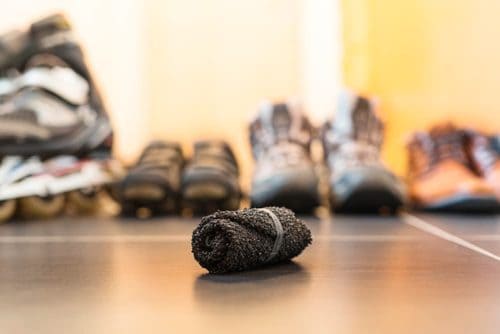
For comparison a Croc Thong weighs 131ea, a standard Croc weighs 160ea and Sealskin Socks weigh 88 per pair! For years these had been my choice for dry feet at trail’s end (as you could slip your wet shoes back over them if you needed to go outside. They do not breathe all that well though. Your feet might benefit more from cooling down and drying out after a long day of slogging through creeks and bogs. For weight the sealskin Socks will take some beating.
You probably know already that I am not a fan of trying to keep your feet dry: http://www.theultralighthiker.com/why-you-should-get-your-feet-wet-when-hiking/
I have tried these Goosefeet Over Booties https://goosefeetgear.com/products/2-waterproof-over-booties
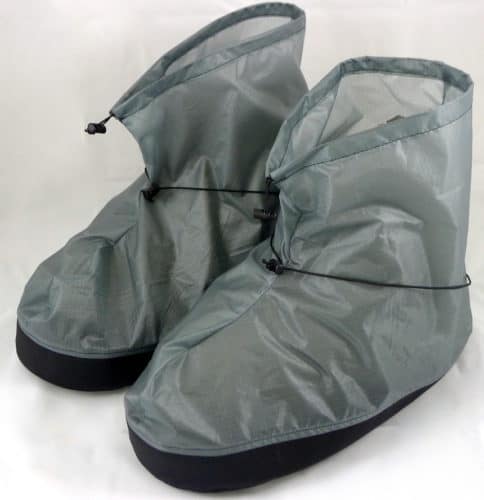
which weigh 20 grams ea. Their down Socks weigh 31 grams ea and are excellent if you have very cold feet (eg in bed). The over-booties do work but they work better with my home made thongs inside. See:
http://www.theultralighthiker.com/spare-shoes-great-for-river-crossings/
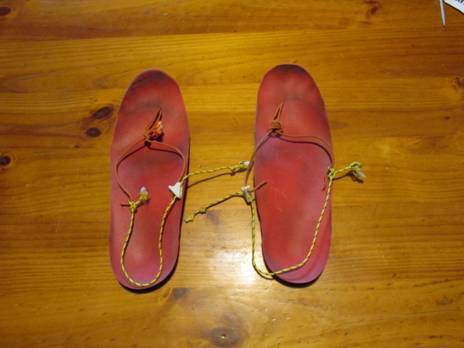
These reduce the side slipping you otherwise get. However, they are far too waterproof and tall so your feet tend to steam up in them.
I am working on a pair of Dyneema jiffies @ 20 grams ea to go over my shoe liner thongs. Here is a pic of one of six so far Tyvek prototypes of them:
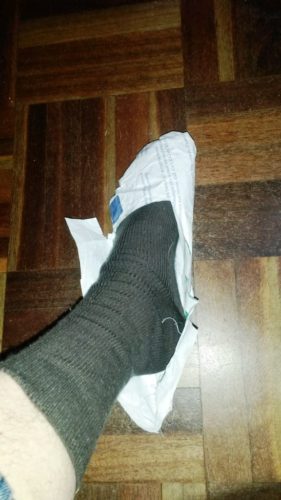
I will soon get them perfected and will post instructions about them. Getting them to fit, stay on and be easily sewable proved harder than I thought.
Update: I have now (14/04/2017) perfected them: http://www.theultralighthiker.com/19-gram-dyneema-camp-shoes/
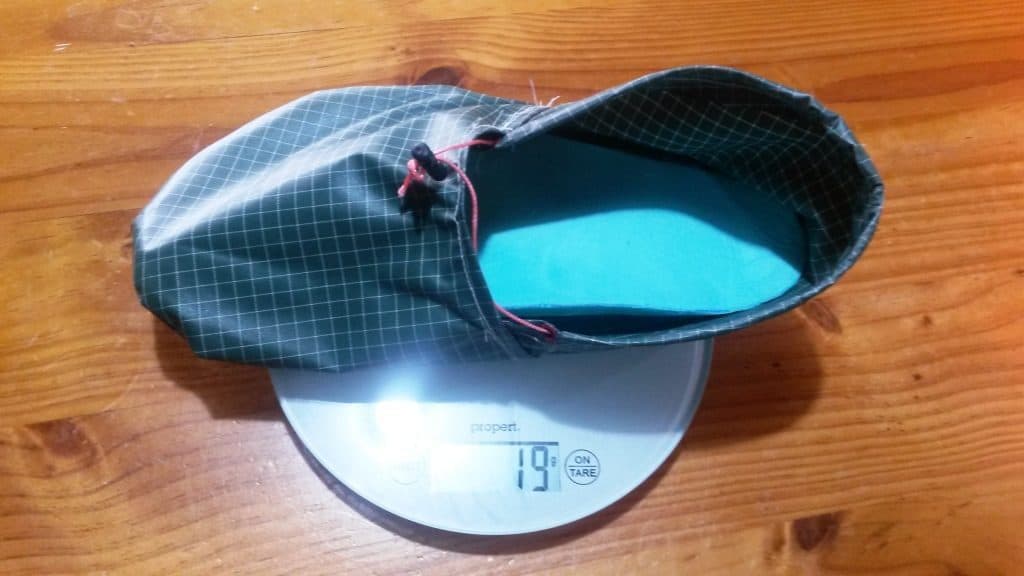
I am determined to have a pair of shoes under 100 grams and which (in an emergency) you can walk quite some distance in (eg 20* km before they wear through) – just in case your shoes completely break in half. If they just come asunder but the soles are still good you should try repairing them with some string – which you should always carry: http://www.theultralighthiker.com/rope-dont-leave-home-without-it/
See also:
http://www.theultralighthiker.com/no-sew-sandals/
http://www.theultralighthiker.com/toughened-foam-flip-flop/
http://www.theultralighthiker.com/cold-weather-hut-booties/
http://www.theultralighthiker.com/fifteen-gram-blue-foam-flip-flop/
http://www.theultralighthiker.com/the-ideal-camp-shoe/
http://www.theultralighthiker.com/spare-shoes-great-for-river-crossings/

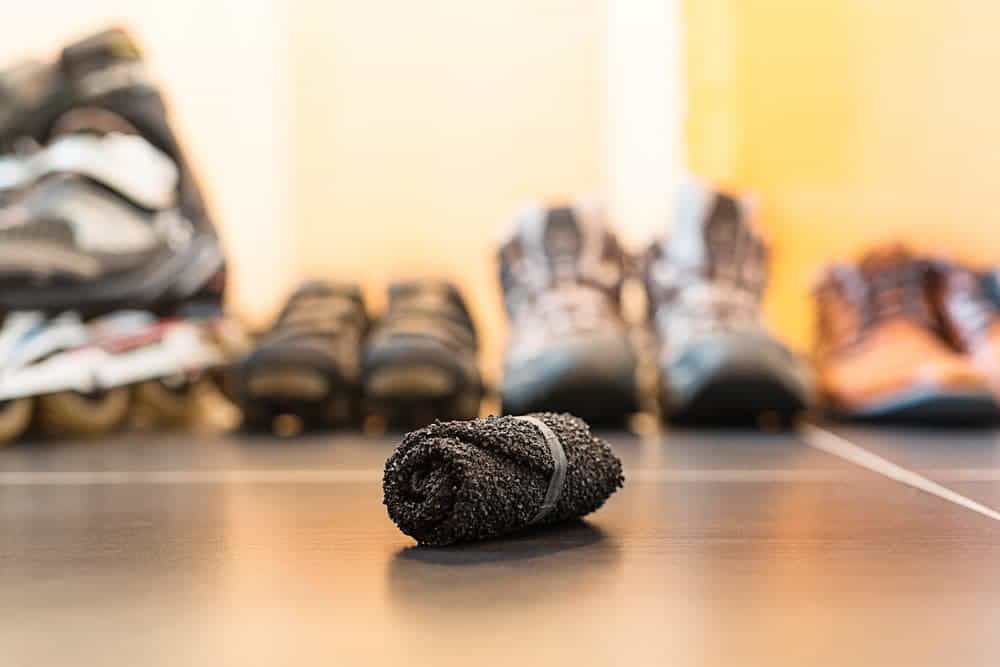
Not sure if you are still working on your camp shoe models. I enjoyed reading your posts and came across an interesting material seems to work well for an extremely durable option and very well may satisfy your goal of an emergency hike out. TPO is used for a roofing membrane roofs. It’s a thin flexible rubber like material with just enough rigidity with a fiber mesh embedded. It’s very easy to cut and shape and comes in a variety of thicknesses. Any roofing company that does membrane roofs would have scraps that would be more than enough to make many shoes. I used your photos to make a simple strap system with some old shoelaces. Would love to send a photo of you’re interested.
Hi Jeremy,
You may not have seen this post https://www.theultralighthiker.com/2021/02/05/sub-ounce-per-pair-camp-shoes/ I have seen the roofing material advertised but have not seen where I can source it in Australia. I was thinking of it as a covering for a wilderness hut (see post of that name). I would be very interested in posting your photos. You can send them to stevendella@finnsheep.com.
Cheers, Steve.